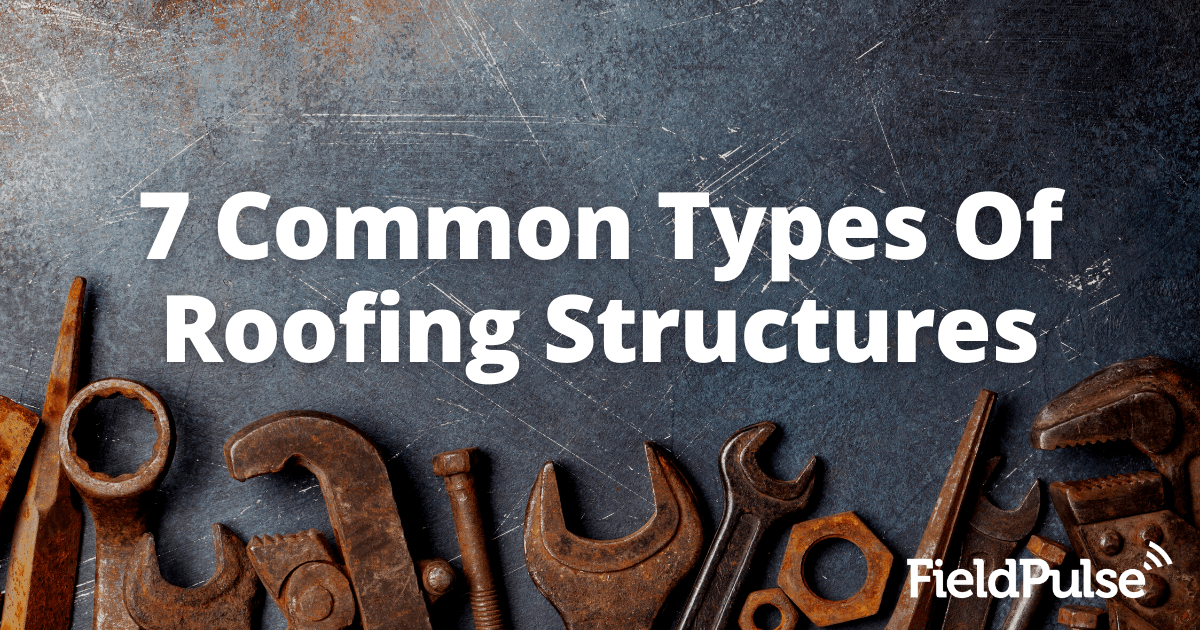As a roofing professional, customers may approach you with questions about which roofing structure type will work best for their current or future home. With the roof taking up nearly half of a home’s exterior space, you’ll want to strive to provide your customer with the best opinions and options to ensure maximum curb appeal once the job is complete.
A customer’s roofing options will depend on a variety of factors, including whether the home is a new-build that’s under construction and open to multiple options, or an established home with an existing roof and layout. Likewise, some roofing styles may be safer than others due to weather conditions like the possibility of snow storms or hurricanes.
With all factors considered, we’ve put together a list of the top seven common roofing structures available to customers today. Check out the breakdown below to determine which options will work best for your customer base.
1. Gable Roof
Of the numerous roofing structures available, the gable roof — also known as the pitched or peaked roof — is one of the most common options on the market. The term “gable” comes from the triangular point that forms when the two angled surfaces of the roof meet. The angle at which the two slopes sit can vary significantly from either form a gentle grade or a steep chalet-style design.
Gable roofs are fairly simple to construct, as the shape is not very complex. This offers customers a fairly inexpensive option that can be constructed with numerous roofing material options, ranging from basic shingles to clay or concrete tiles. For homes located in areas of intense winters, the angled characteristic of a gable roof also makes it easy to shed snow in the event of a heavy storm.
2. Clipped Gable Roof
Also known as a bullnose roof, a clipped gable roof offers a similar design aesthetic to the regular gable roof, where the two sides meet at a ridge. However, instead of forming a complete triangular point, the two sides of a clipped gable roof meet to form an additional flat surface that often faces the front of the home.
Although clipped gable roofs offer a bit more design detail than a standard gable roof, they both feature similar benefits. While it might not be as inexpensive, a clipped gable roof offers a great shape to support the easy shedding of snow during the winter season, and offers numerous material options like that of the classic gable roof.
3. Hip Roof
Unlike the two-sided gable roof, a hip roof features four slopes that meet to form a simple center ridge. The lengths of the slopes can range to form different hip styles including the half-hip, which has two shorter sides. Because of a hip roof’s upward angle on all four sides, this option can offer customers extra living space upstairs to include features like a crow’s nest.
Similar to that of the gable style, hip roofs support a wide variety of roofing material options. Furthermore, the four-sided angled feature works well for areas that experience strong storms, as the angled slants easily direct wind gusts up while simultaneously shedding rain and snow down.
4. Mansard Roof
Unlike the above roofing structures, a mansard roof features a four-sided design with a double slope. This means that the top of the roof resembles a hip roof, with four slopes that meet to form a center, where the bottom of the roof steeps dramatically to form a perimeter around the home. This structure is popular for those looking to add extra space, as its shape allows homeowners to use the attic space as full living quarters.
Also called a French roof, constructing a mansard roof is a bit more tricky due to the additional detail required in designing both slopes. They are also more expensive, but can be seen as a cost-worthy investment due to the added space. For areas of heavy snowfall, mansard roofs may not be the best option as the slow pitch portion of the roof does not promote snow shedding.
5. Gambrel Roof
A Gambrel roof is very similar to a mansard roof in that it has two slopes, however, Gambrels feature just two sides rather than four. Also known as a barn roof, the Gambrel style is commonly seen on top of farmhouses, log cabins and barns, hence its nickname. Like the mansard roof, the Gambrel roof offers significant extra space to create a full attic or loft.
The construction of Gambrel roofs is quite simple, as they only require two roof beams and the support of gusset joints, which keeps customer cost down. But as with the mansard roof, areas of intense wind and snowfall should weigh their options, as intense pressure from these events is not good for the health of the roof.
6. Skillion Roof
A very simple yet unique design, a skillion roof resembles a classic gable roof that has been split asymmetrically to create one slope that isn’t attached to any other roof surface. Also called a shed roof or lean-to, this modern design was typically used on porches and add ons but is now being more commonly incorporated into ultra-modern home construction.
Skillion roofs are fairly simple to construct and require significantly less building materials than other roofing structures. Thus, skillion structures can be considered quite the cost-effective option. The steep slope is also perfect for areas of intense weather, as heavy rain and snow can easily slide off the roof.
7. Flat Roof
For this roofing structure, the name describes it all. As opposed to previous roofing options that feature an intensely angled slope, flat roofs have a very minimal slope for the sole purpose of supporting water run-off and drainage. These roofs are the typical choice of industrial and commercial buildings, but have recently become a more popular choice for homeowners.
A flat surface is a great option for the eco-friendly customer, as solar panels can be discreetly placed on top. As for intense winter areas, it’s advisable to avoid this roofing choice, as the minimal slope does not support the shedding of heavy snow. With this being said, roofing professionals must also consider the importance of waterproofing the surface, as these roofs are much more prone to water leakage than the previous options we’ve listed.
Stay in the Know to Keep Customers Educated All Year Long
From repair requests stemming from a localized weather event to a booming housing construction market, roofing professionals can see an uptick in service requests at any given time of the year. When customers come to you for expertise, it’s imperative that remain up to date with the most common roofing structure types.
Once a customer’s roof construction is underway, you’ll want to ensure your project management processes remain well organized to avoid any operational hiccups. This is where FieldPulse software for service businesses comes into play. With FieldPulse’s business management software, contractors can easily record client information, schedule workers and create invoices to organize any project. To learn more about what FieldPulse can do for you, schedule a demo today.


